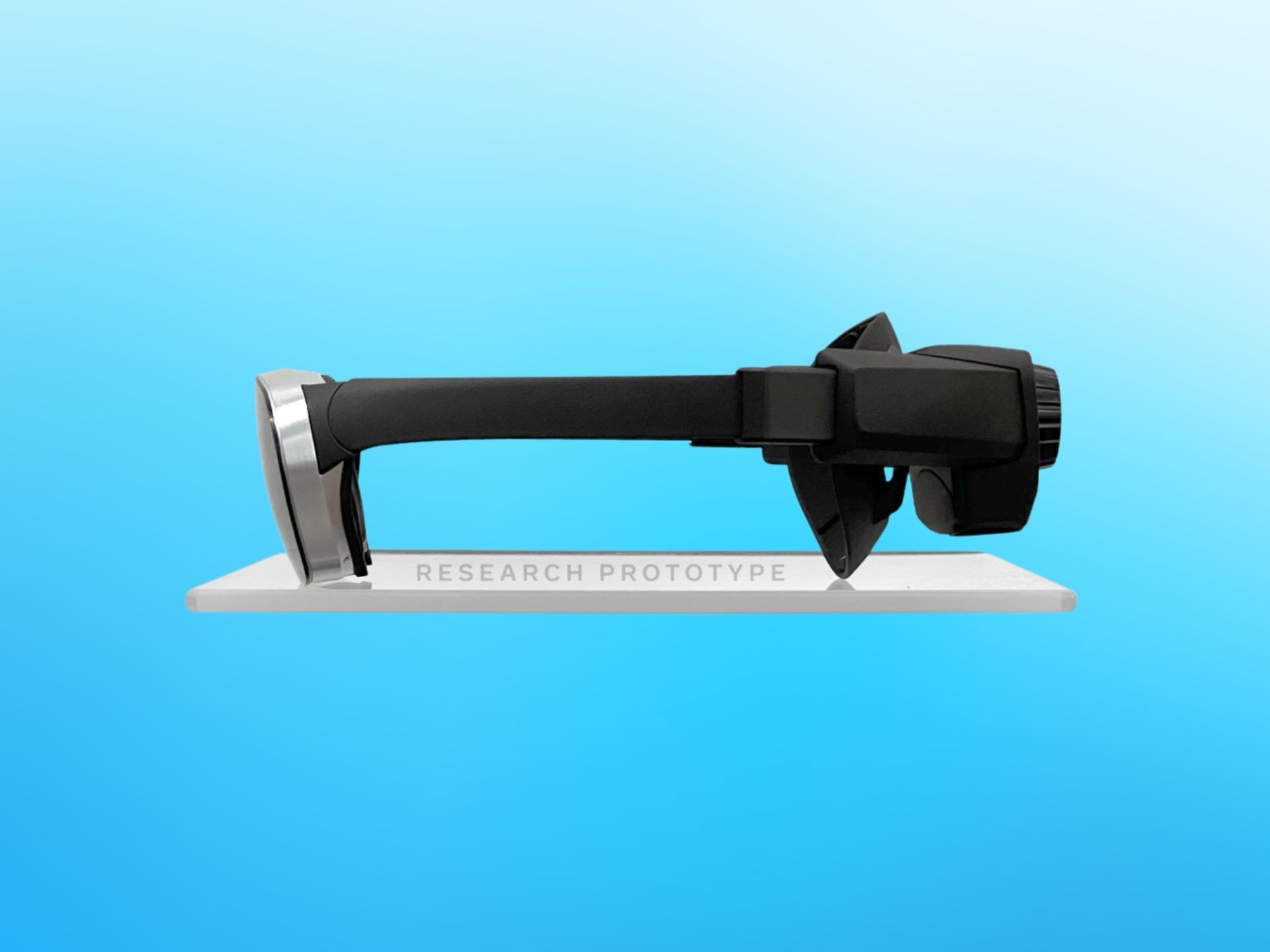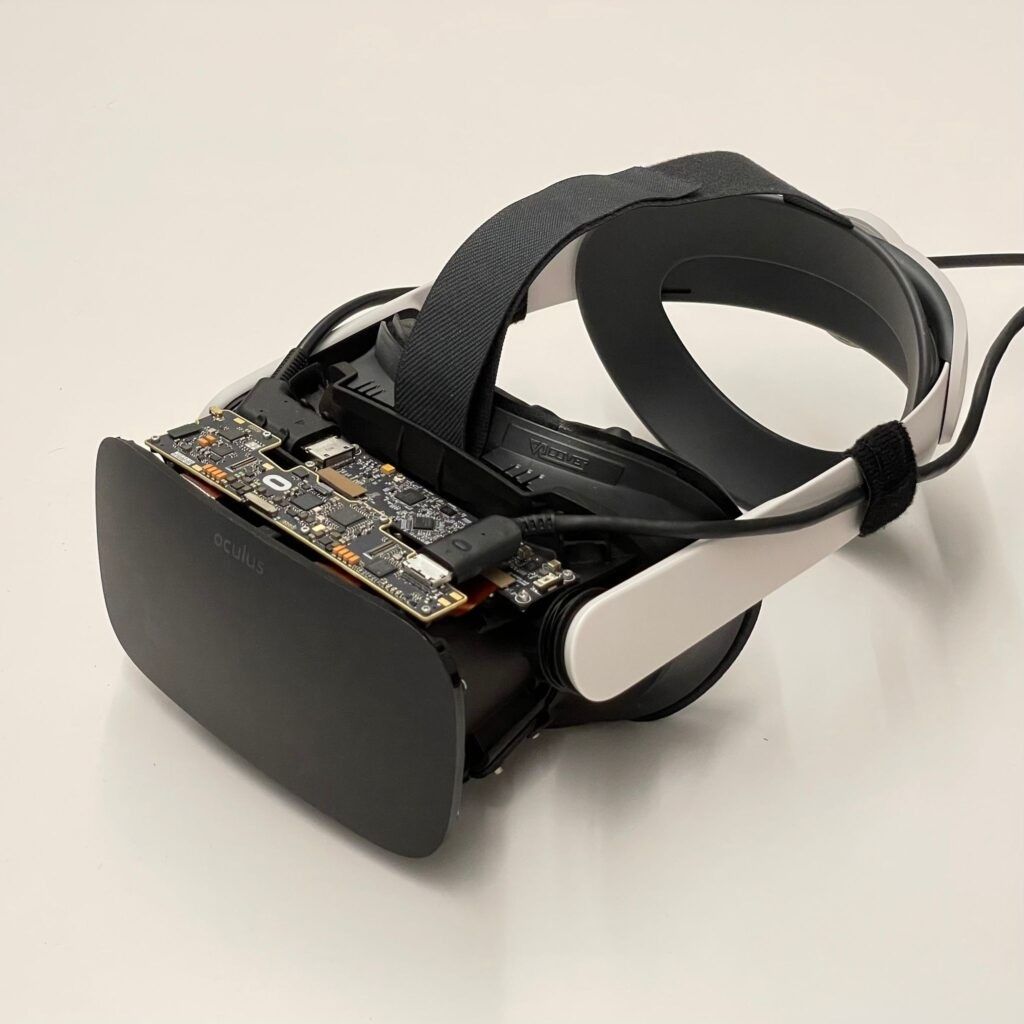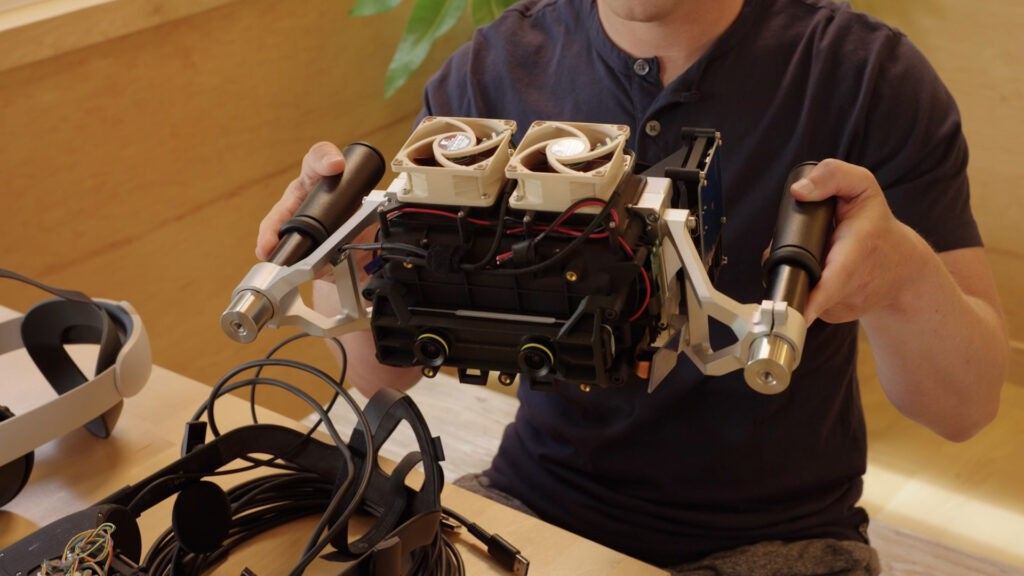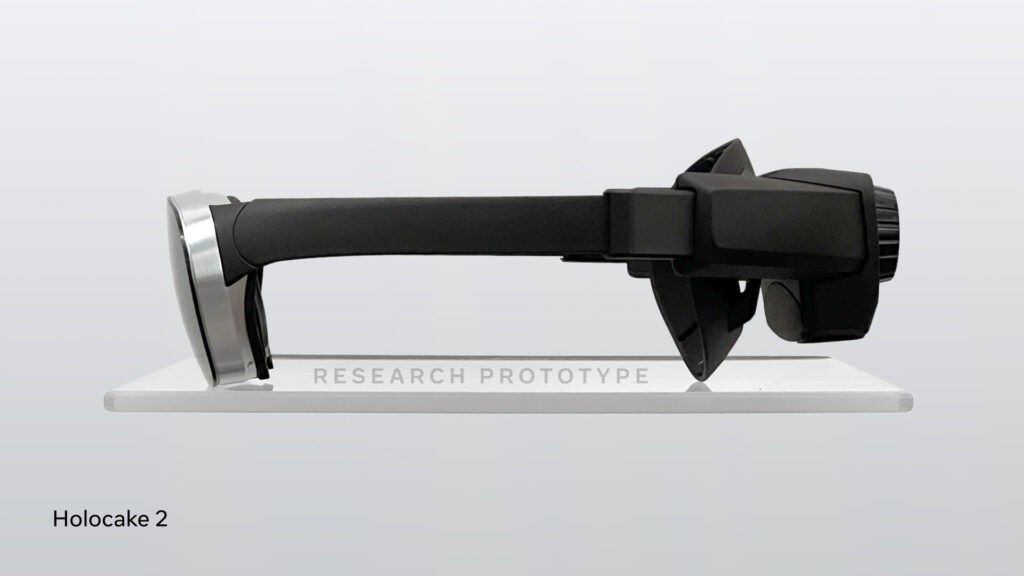Meta, the parent company of Facebook, Instagram and WhatsApp, is pouring billions into R&D to develop more advanced virtual reality headsets. The platform has already announced that its Metaverse platform, called Horizon Worlds, has reached more than 300,000 users, and the company just showed off a few prototypes that look very exciting.
https://twitter.com/NathieVR/status/1538898759962222592
Mark Zuckerberg, the CEO of Meta, just showed off a few prototypes in a newly uploaded Facebook video. In the video, Zuckerberg shows off multiple prototypes, including one dubbed “Butterscotch” (via GMW3). This prototype looks like a modified Oculus Rift, and it’s built to improve the resolution of the image quality. It has 60 pixels per degree, and it lets the user read the “smallest letters on an eye chart”, which on its own already sounds impressive.
Meta Butterscotch Prototype
Source: Meta
The headset doesn’t come with an improved display panel; instead, the team has shrunk the field of view to about half of the Meta Quest 2 headset and developed lens that would allow the image to show up in higher resolution, improving the overall experience and immersive feel.
Half Dome
The second most important thing in VR is focal depth. The “Half Dome” headset allows the user to focus on faraway objects and nearby ones with ease. It uses eye-tracking and varifocal optics to make it seem natural, which provides a greater sense of depth.
Starburst
Meta Starburst Prototype
Source: Meta
“Starburst” is another prototype that brings support for HDR to the VR world. It’s the first device to support the technology, although bear in mind that it’s still just a prototype. Meta’s goal is to reach 10,000 nits of brightness, but the highest that is currently available on modern TVs peaks at just 2,000 nits. The Meta Quest 2 also maxes out at just 100 nits.
The “Starburst” prototype contains a bright lamp behind the LCD panels, allowing the headset to peak at an impressive 20,000 nits. As you would expect, the current prototype is large, and likely produces a lot of heat looking at the fans on top, but it shows what’s possible, and what’s yet to come.
Holocake 2
Meta Holocake 2 Research Prototype
Source: Meta
Meta’s goal is to pack all of these technologies into a new device that is “lighter and thinner than anything that currently exists.” Holocake 2 is the latest prototype from the company, and it’s a “working experimental device” that is already capable of playing PC VR games. It uses holographic lens, and it’s impressively thin and low-profile. It makes us wonder how the device manages to perform under load – although we assume it’s currently relying on a cable for research purposes until the technology advances further.
There’s a lot to take in from these new prototypes, and it’s important to keep in mind that it’ll take several years to see a prototype that can shrink all of these unique and exciting technologies into a single compact, thin and light VR headset. Meta will have to solve many problems, including the form factor, heat, power, and image quality, all of which will contribute to many challenges.
The metaverse and AR/VR headsets are extremely popular thanks to the large advertising budget these companies spend on hyping up the technology and the billions more they pour into R&D to get the VR platforms off the ground. We’ll likely hear even more about these devices in the future as Meta gets closer to its goals, and we’re also expecting Apple to release an AR/VR headset sometime early next year.
My thoughts about the new prototypes
I think it’s exciting to see these technologies in working prototypes, and it’s even more interesting to see a real concept of Meta’s vision. While we’re still a few years away from seeing any of these technologies materialize in a single, compact headset, it gives us an idea of what to expect in the near future, and it looks bright – pun intended. VR lens and displays will be brighter and sharper, and eye tracking will open a whole new world, allowing us to enter into virtual spaces and experience something we’ve never seen before.
As a Ready Player One fan, I’m really excited to play my favorite games on light and compact headsets, and I can’t wait to experience simulation games without getting motion sick all the time. The new VR technology will open an entirely new level of the entertainment industry – which already exists – and I suspect that education and the design industry will also benefit from these advancements as they’ll allow for easier and more immersive training and working environments.




